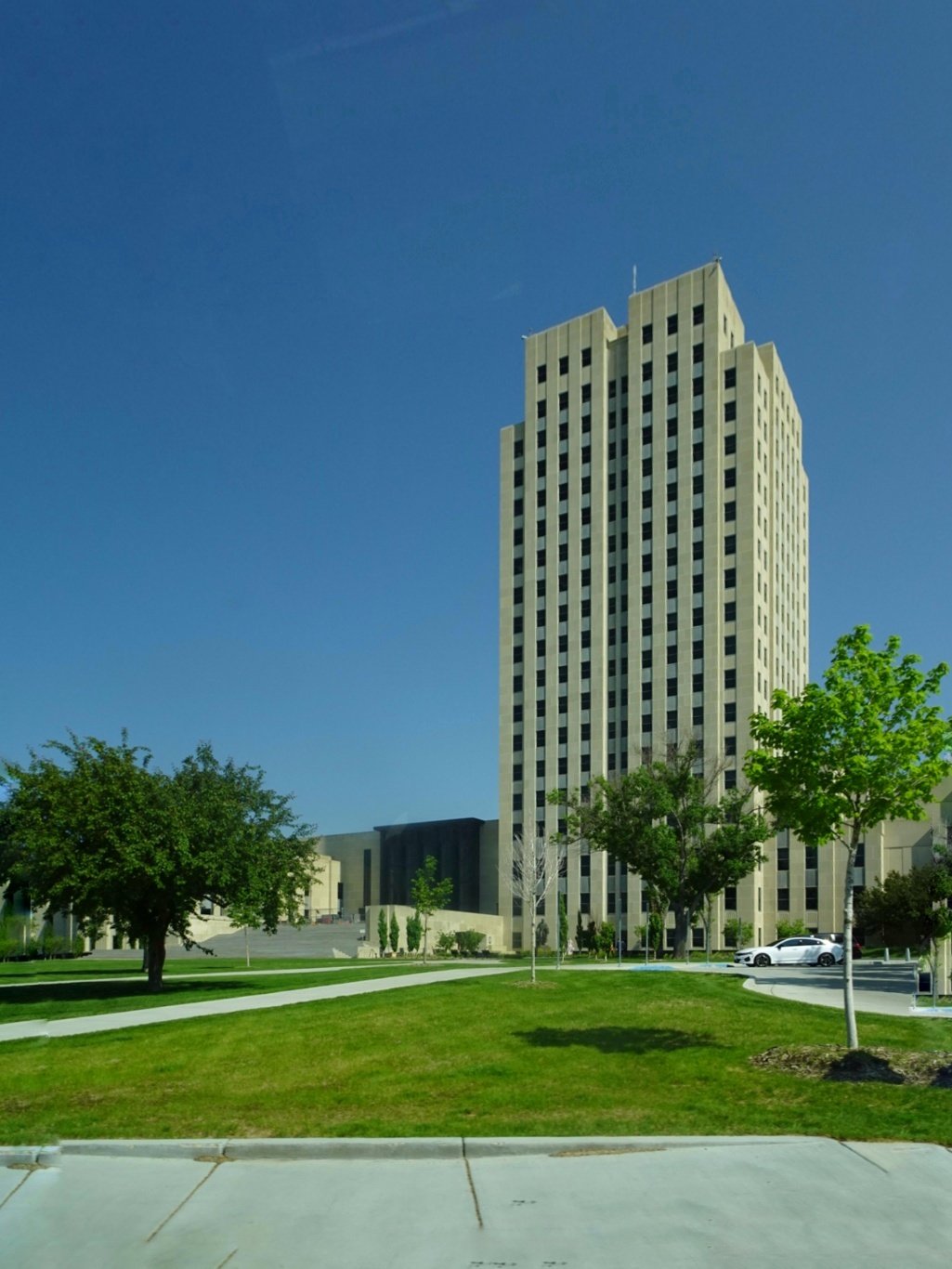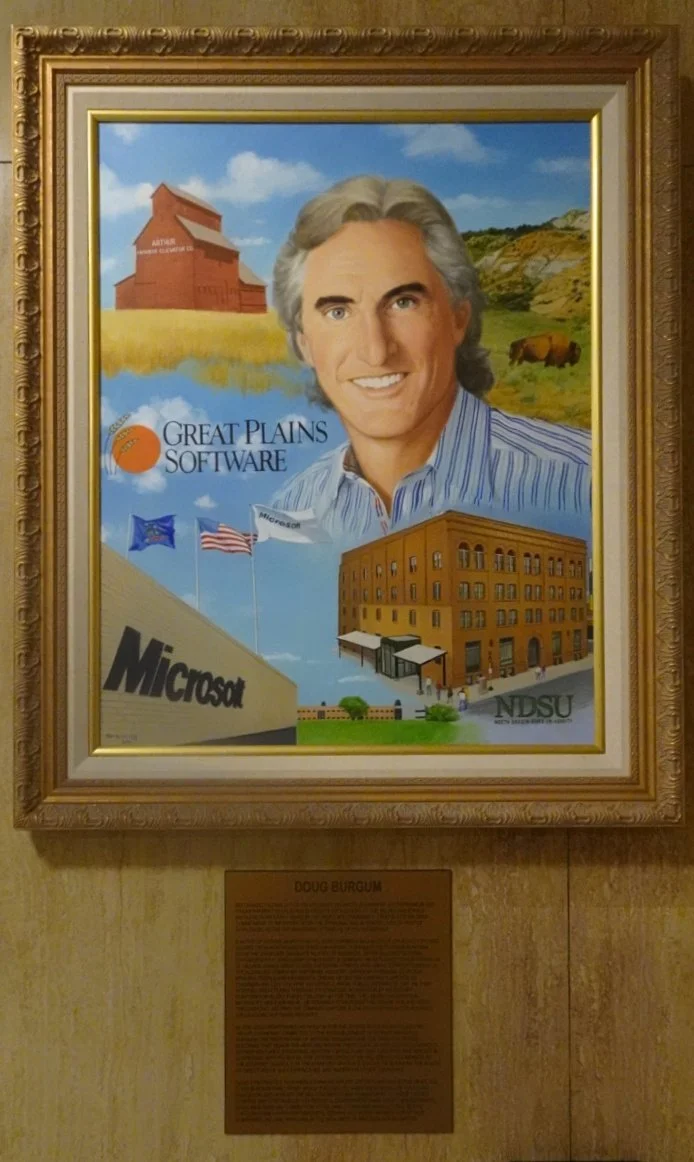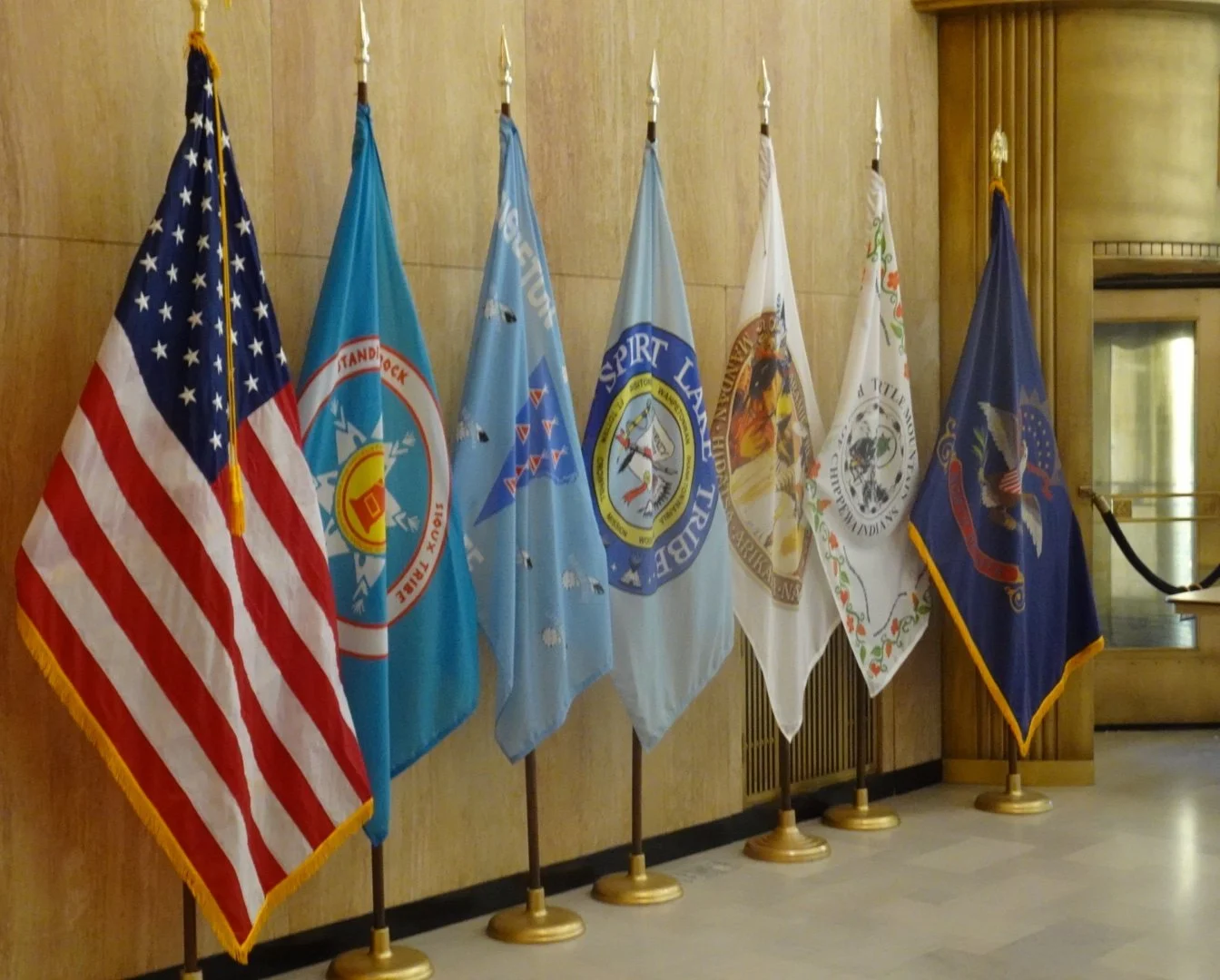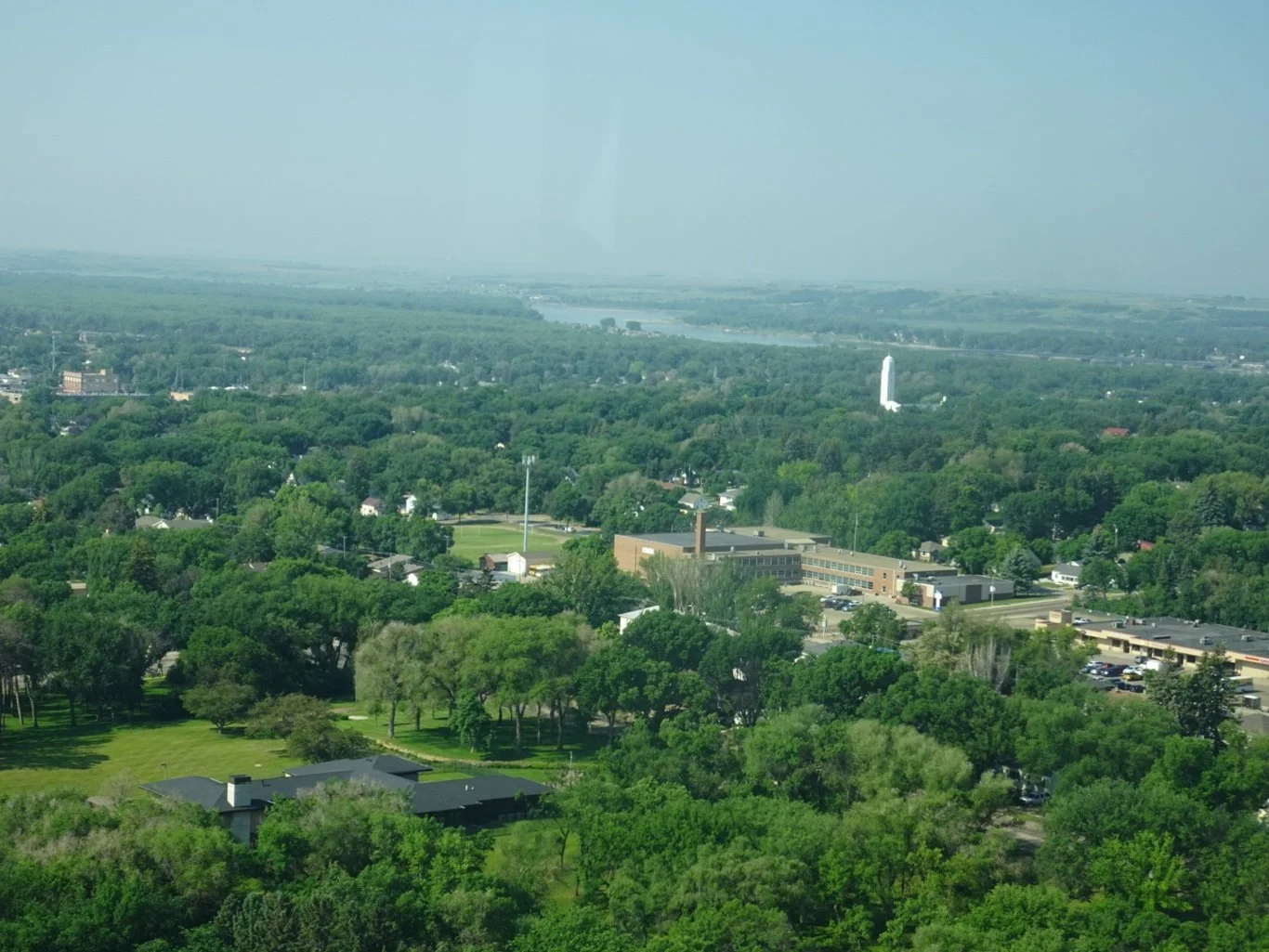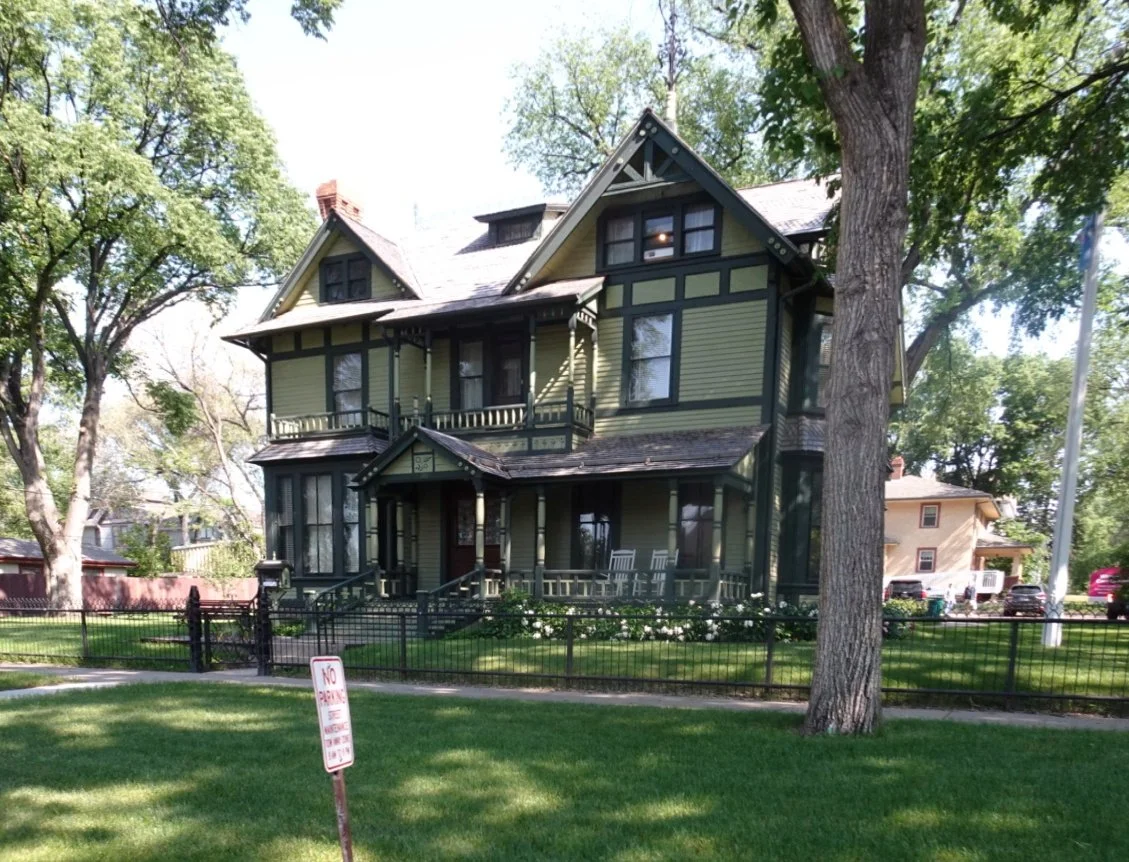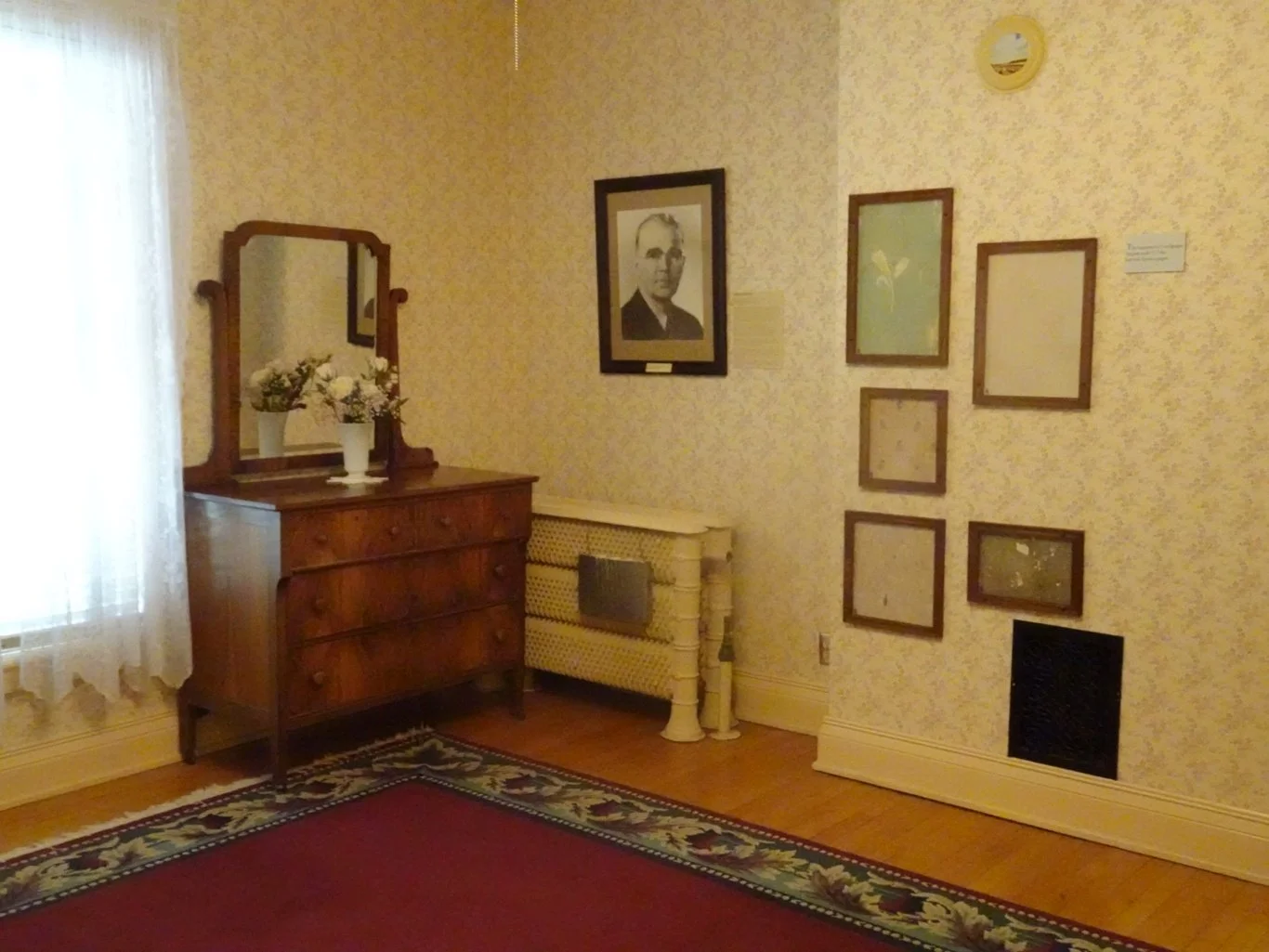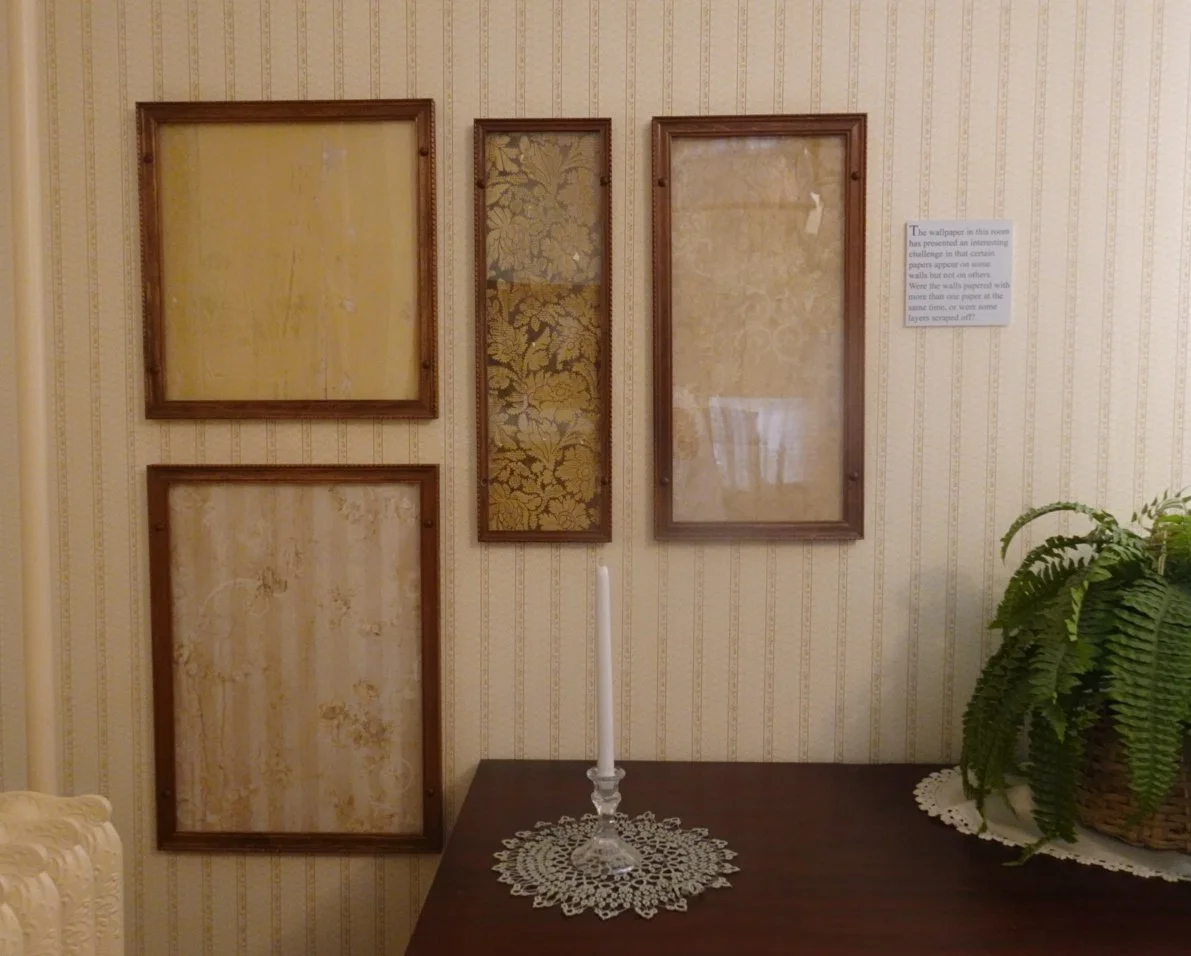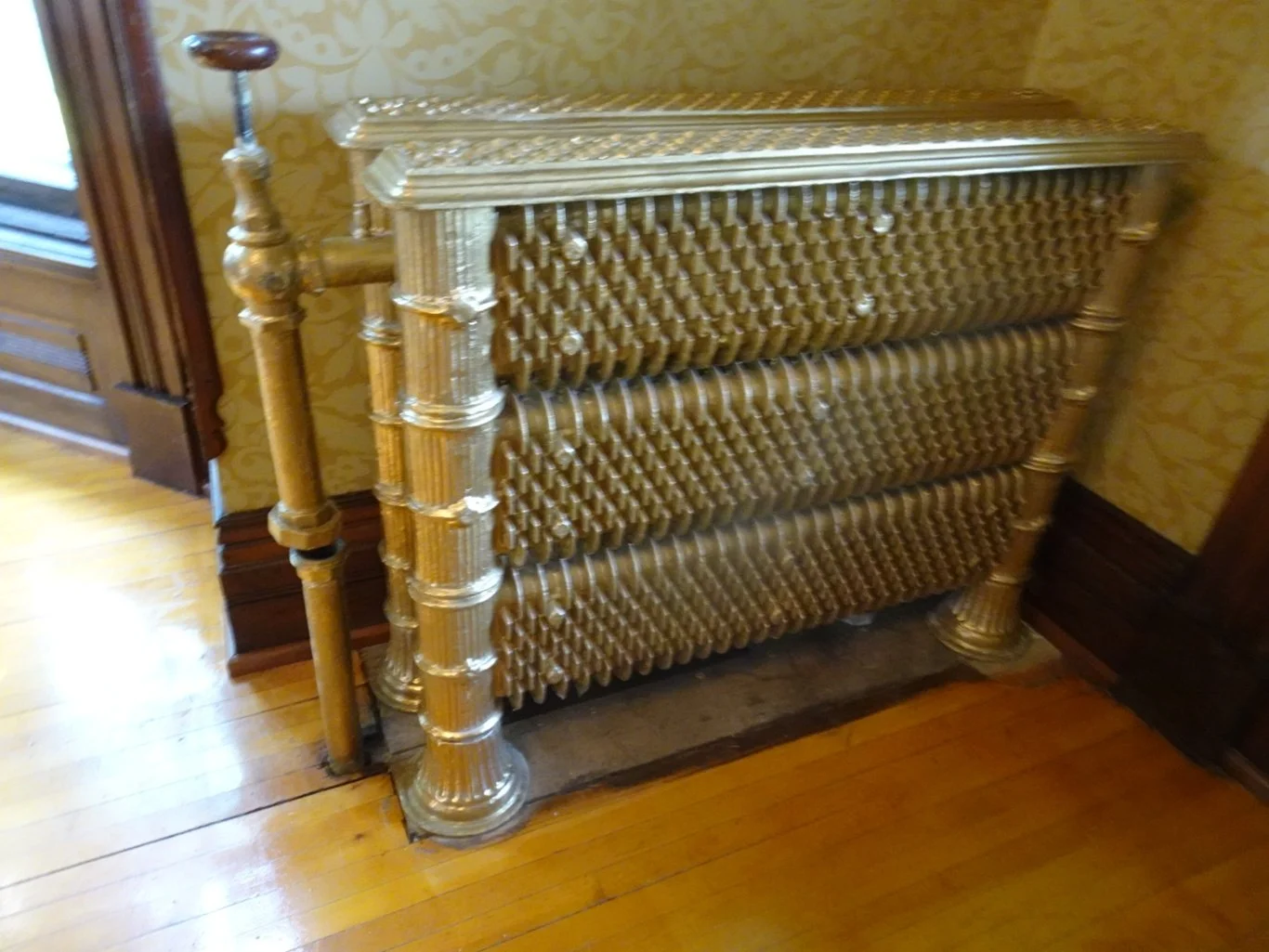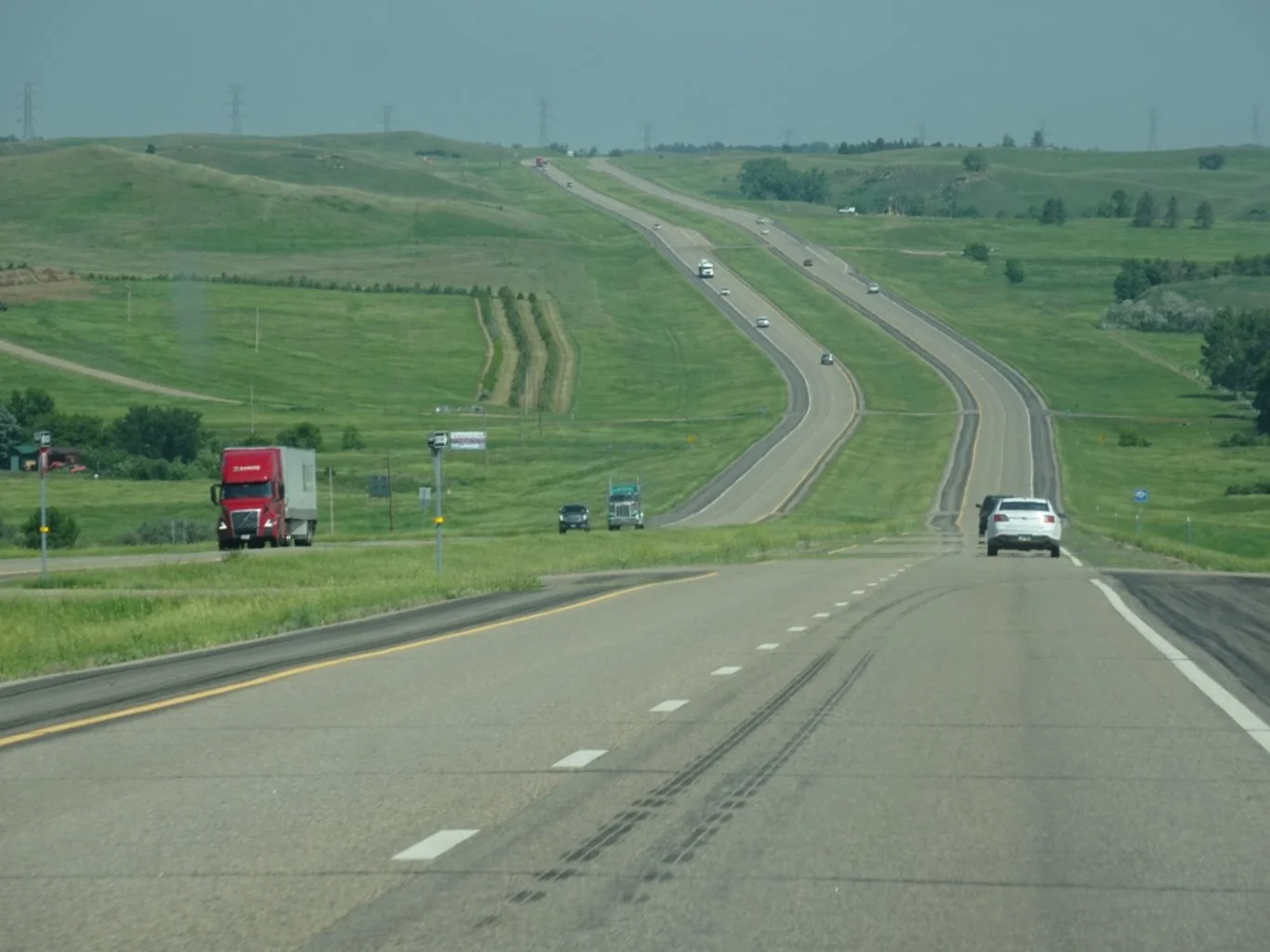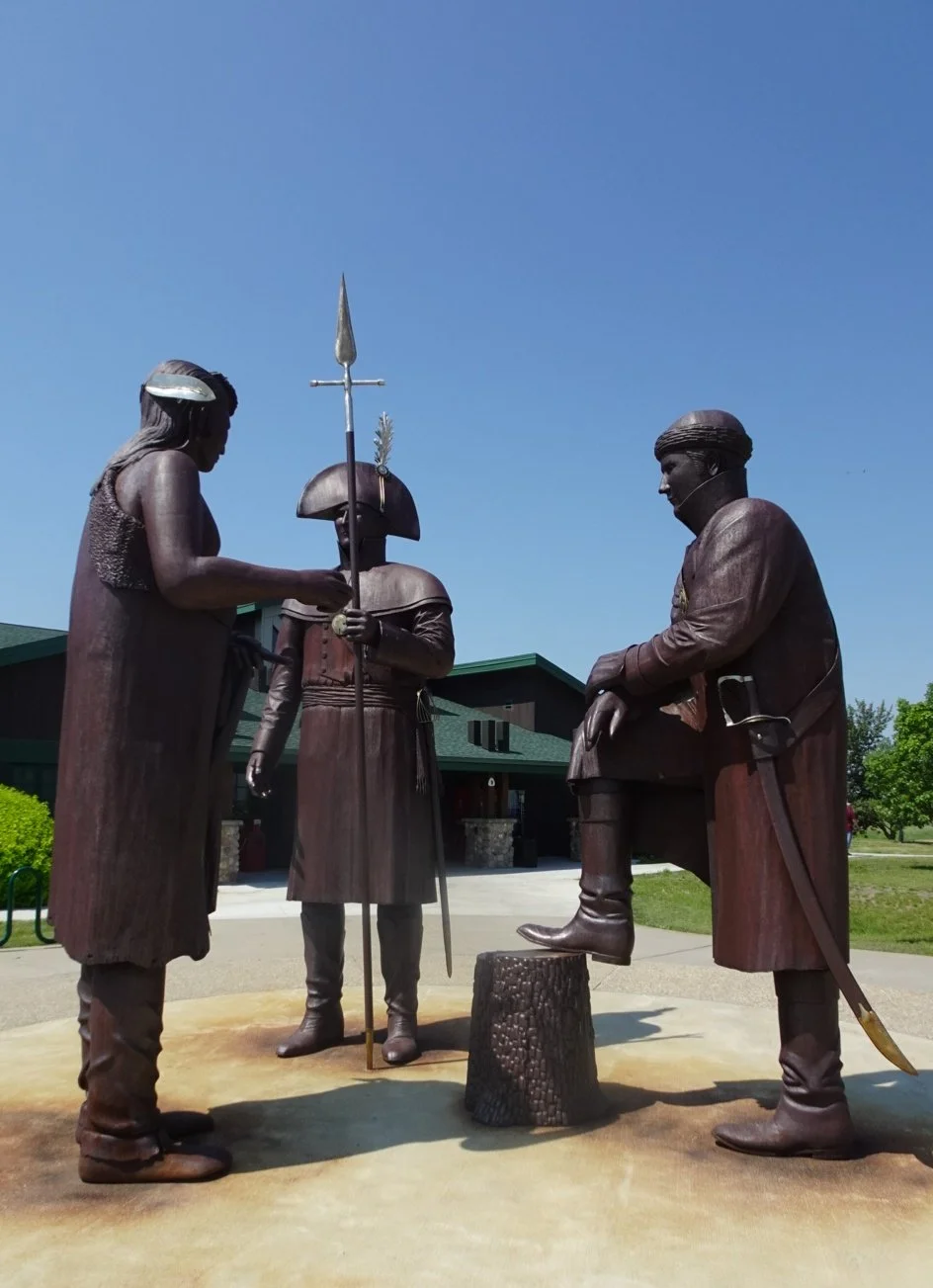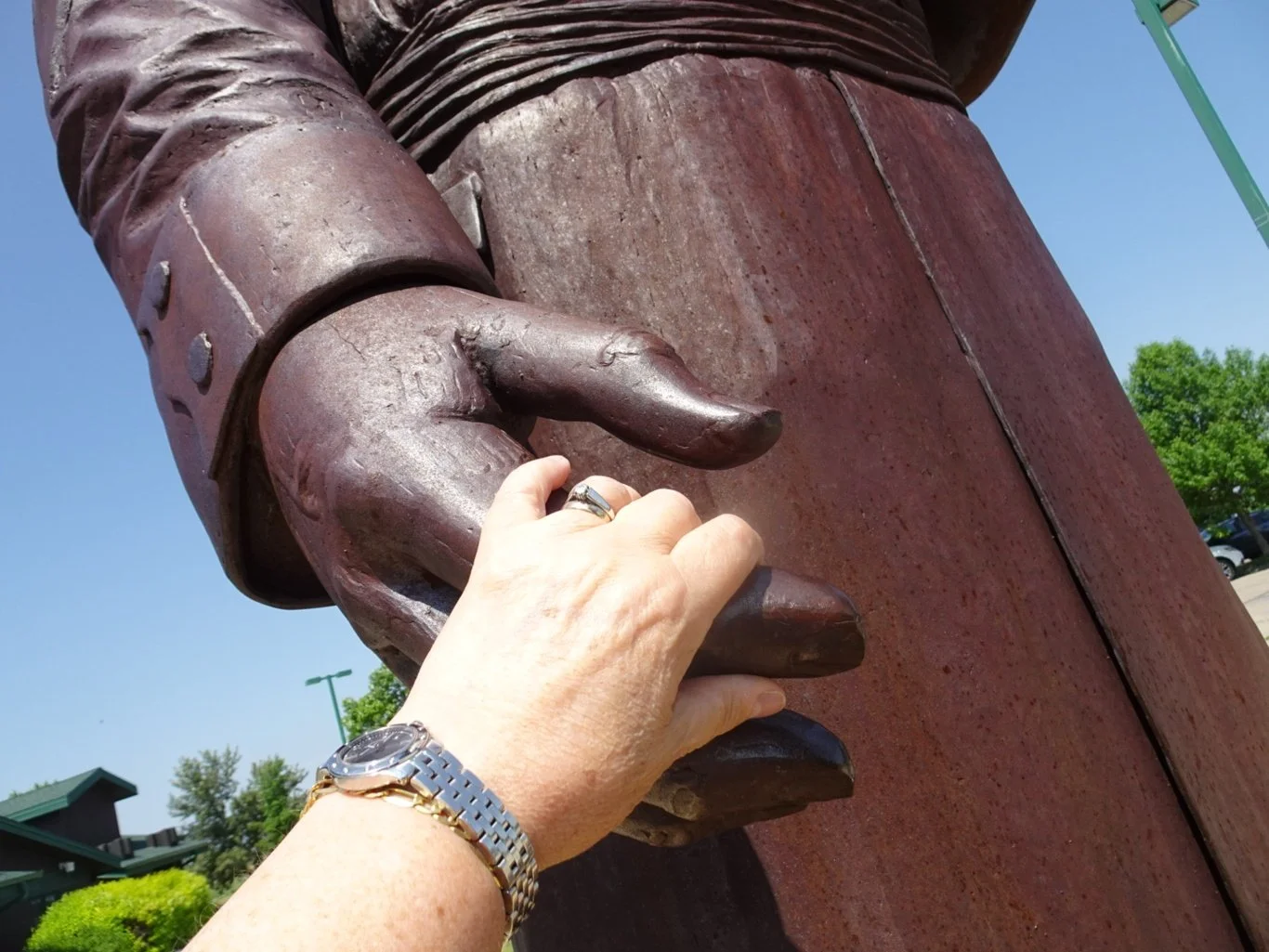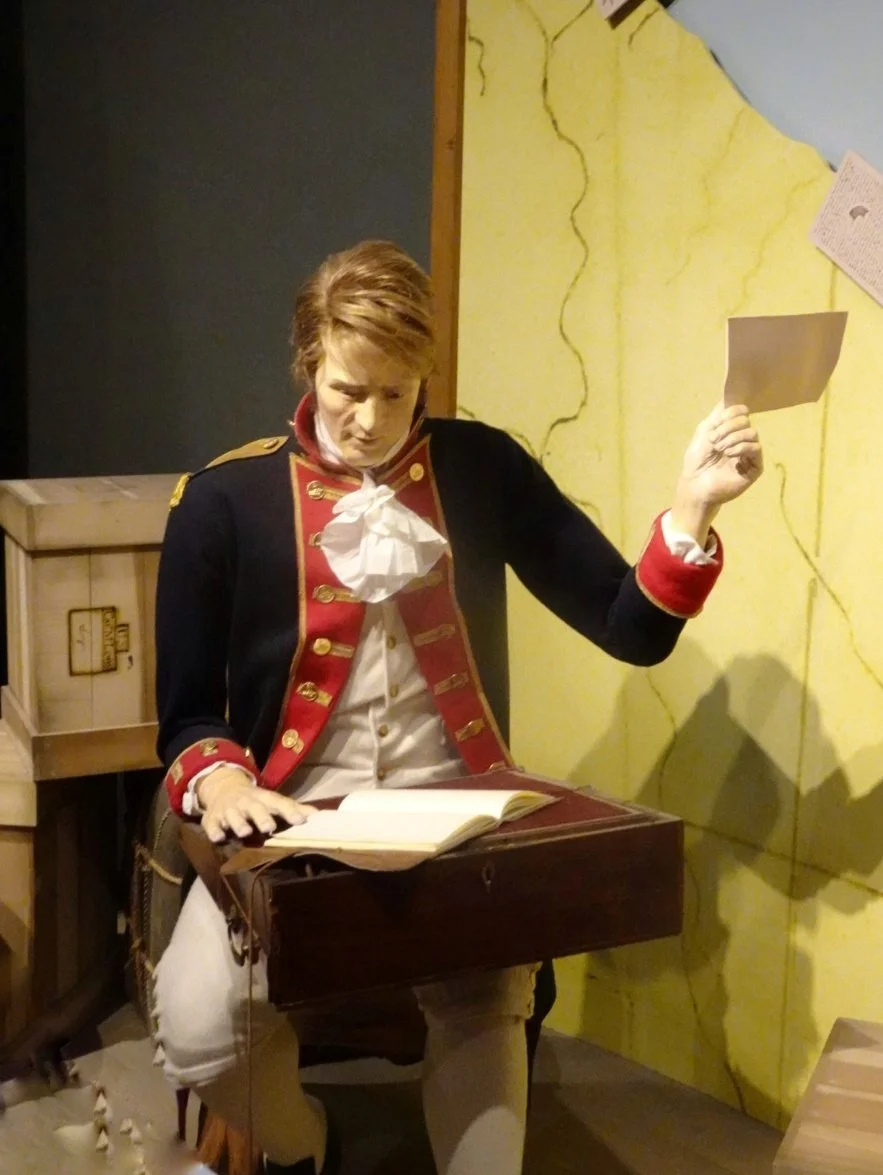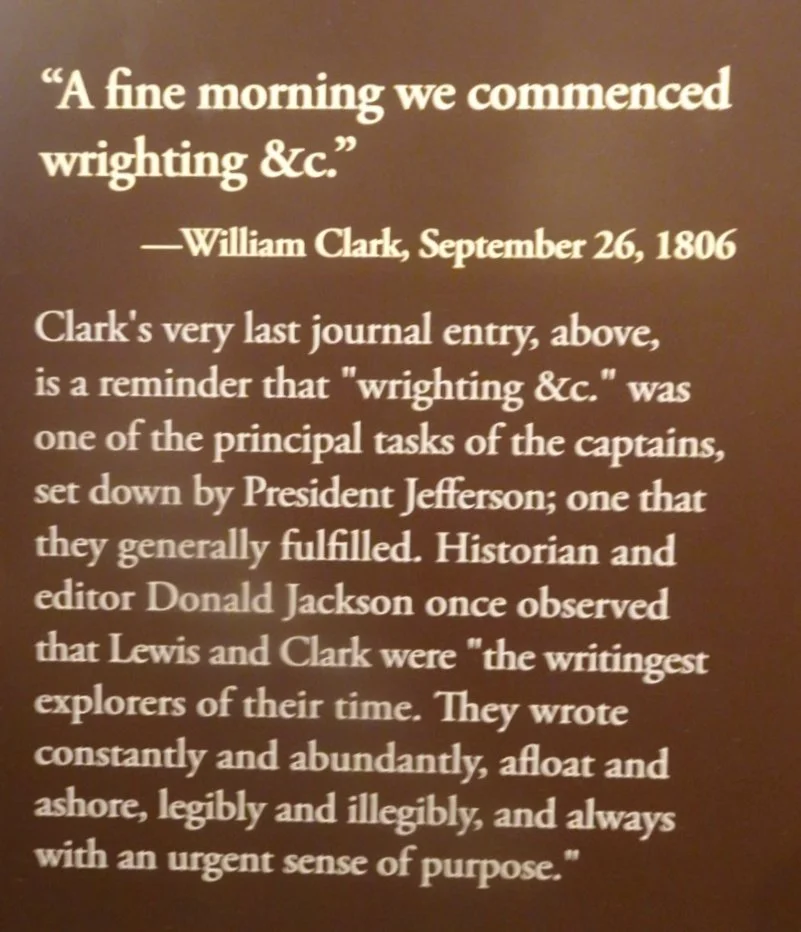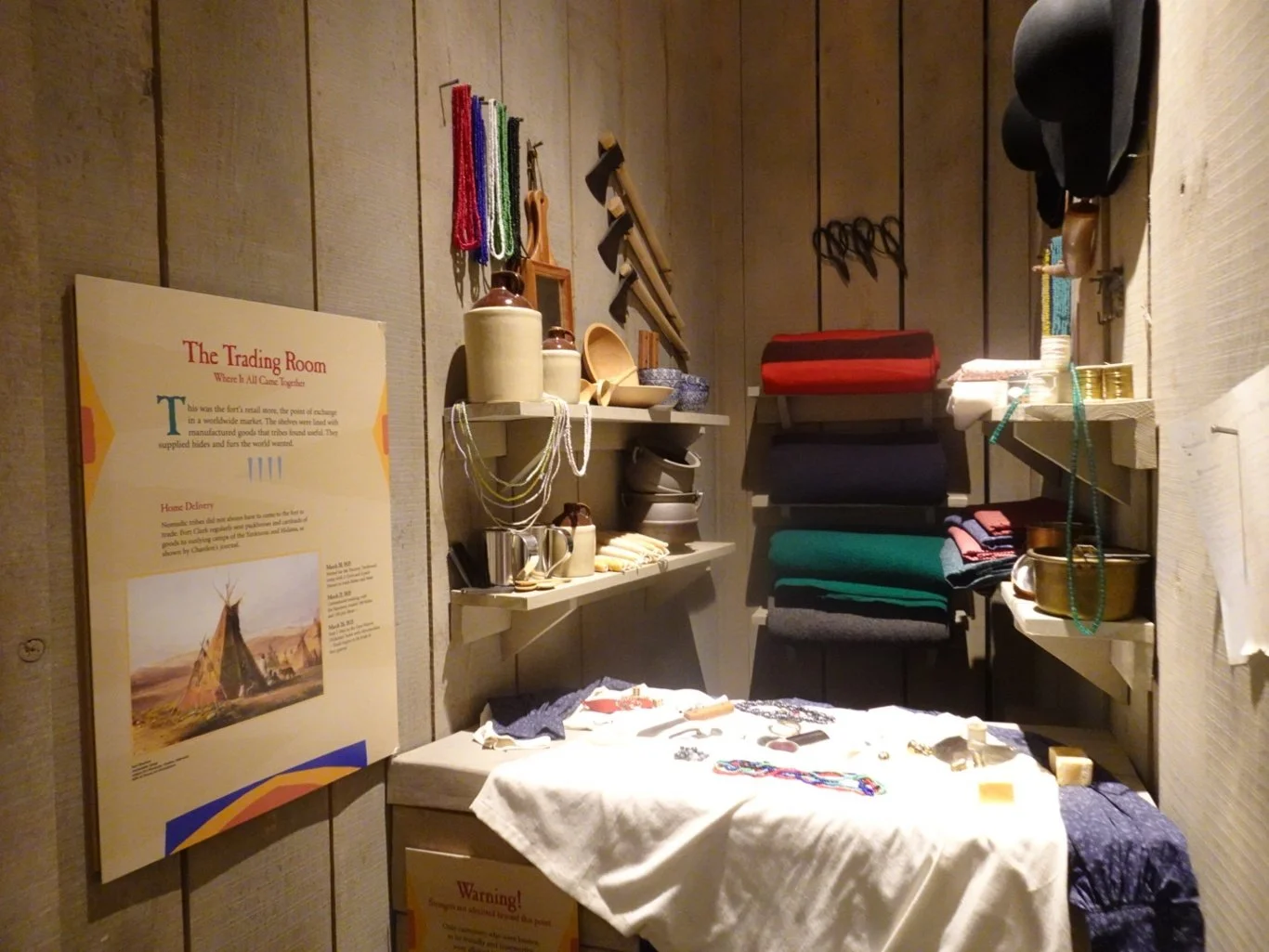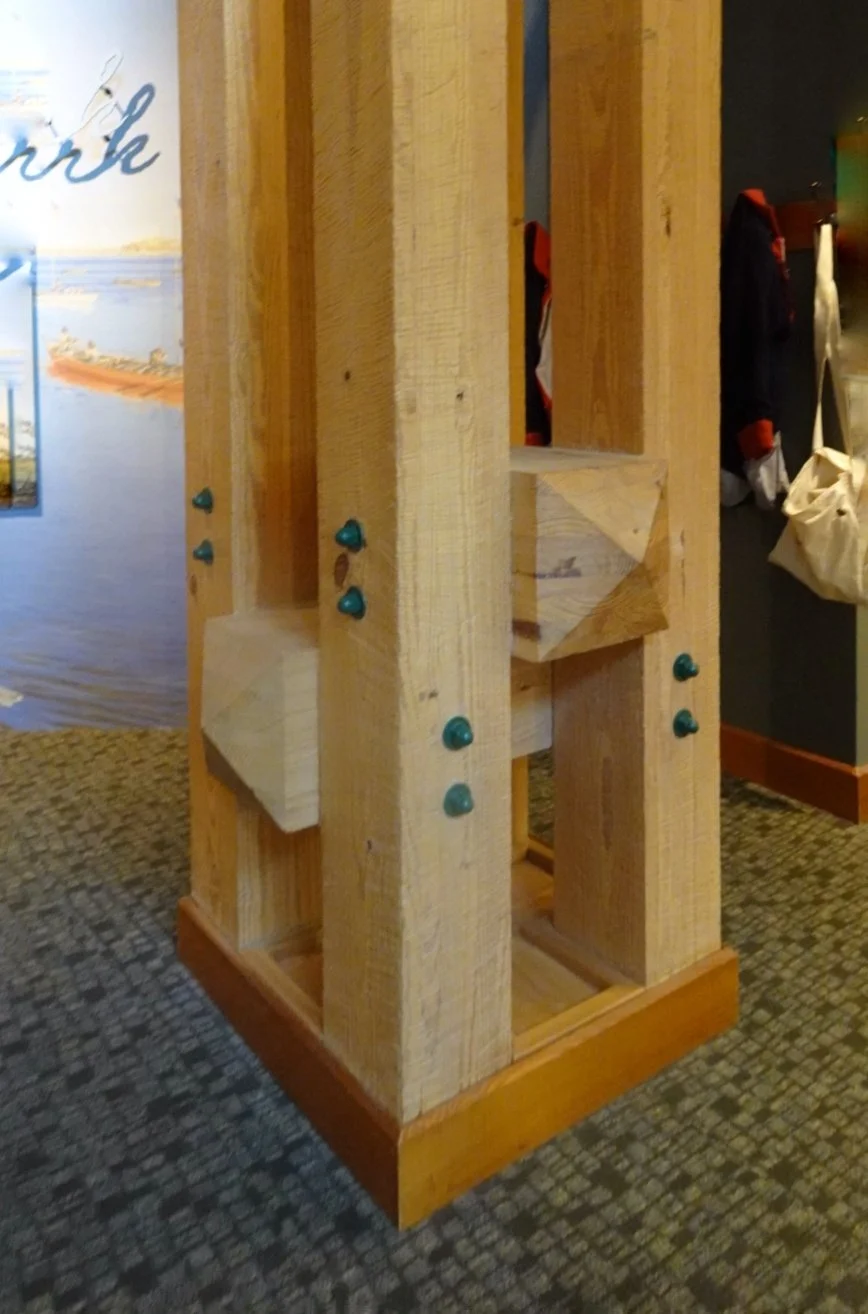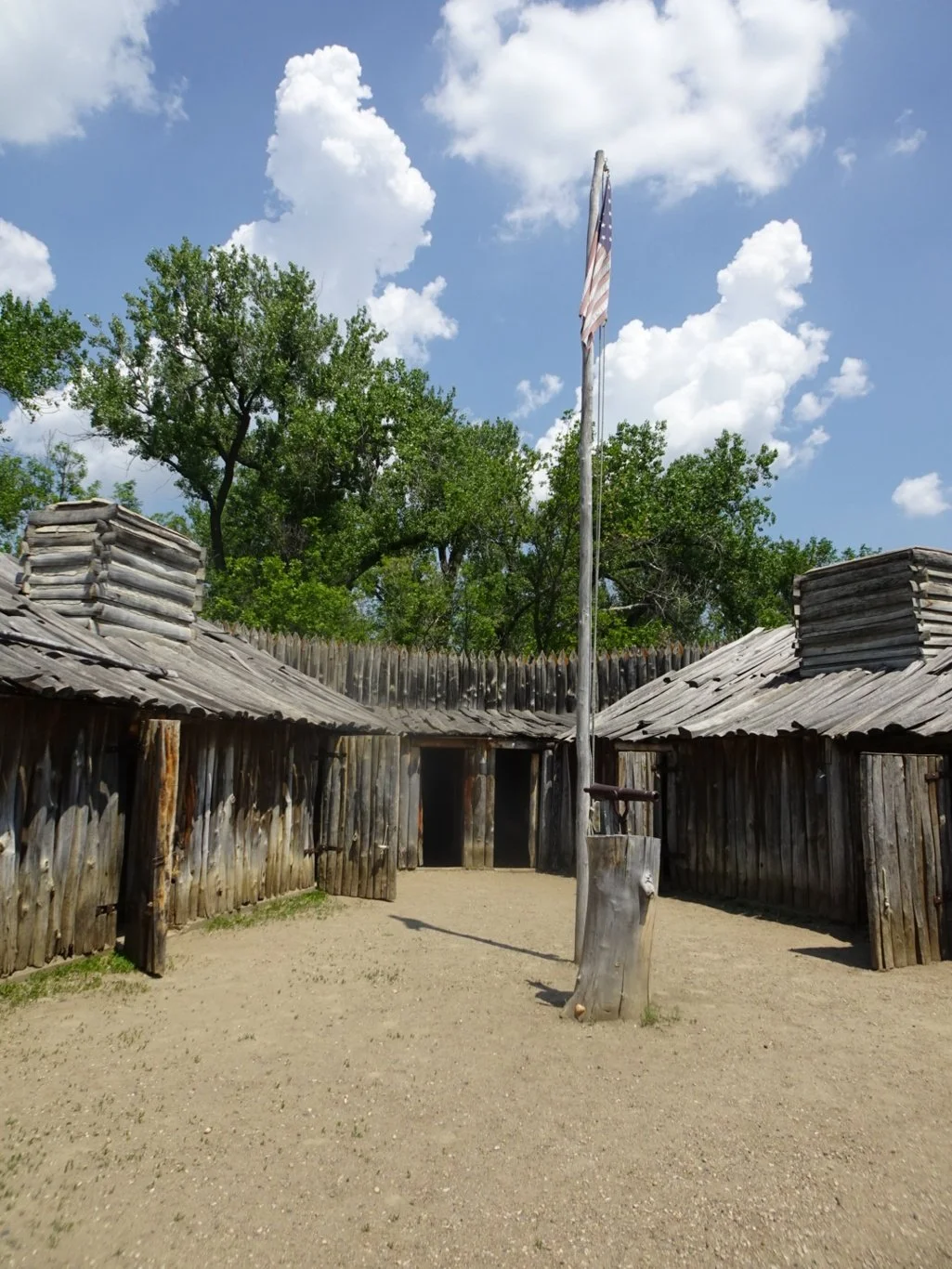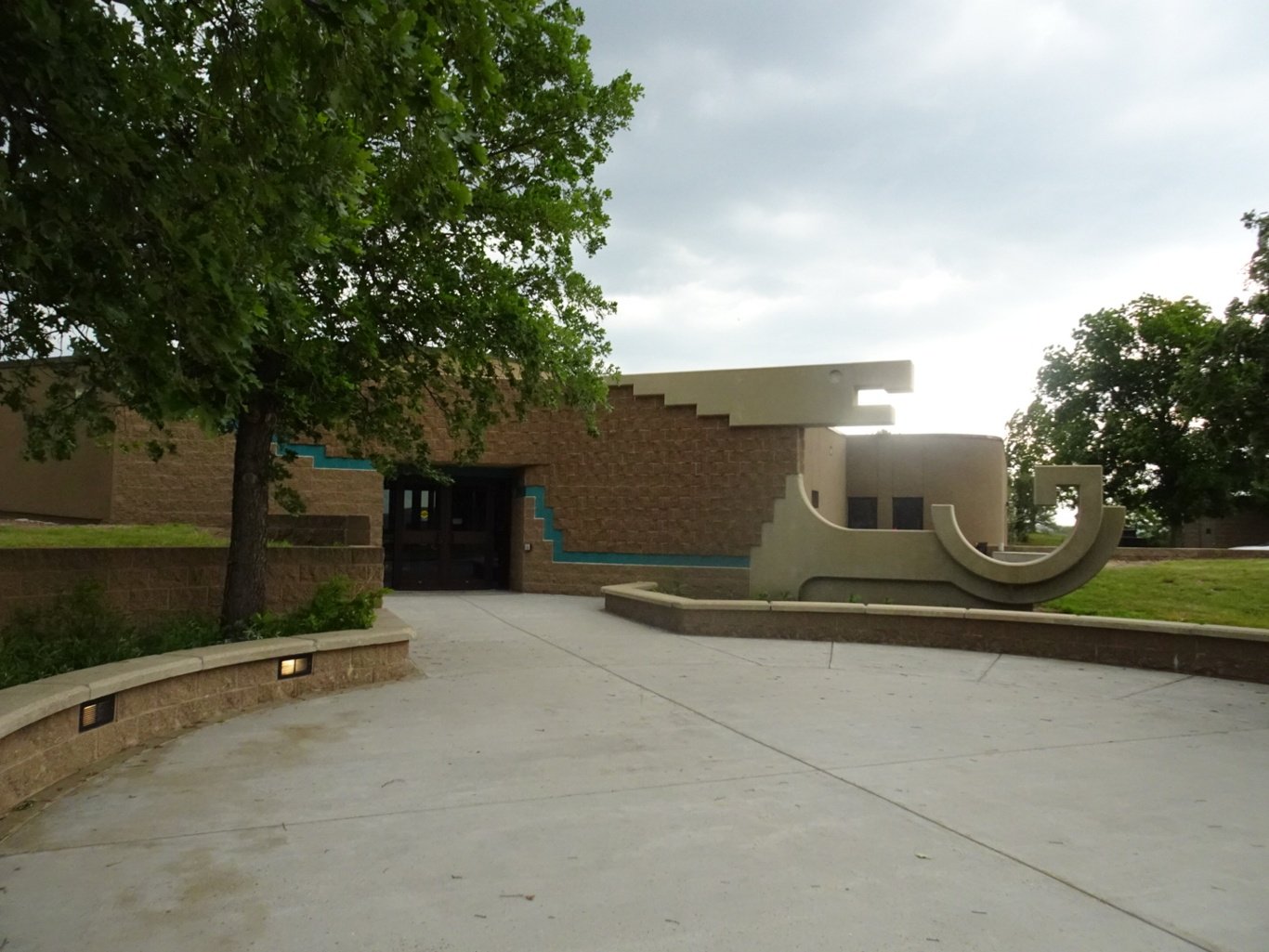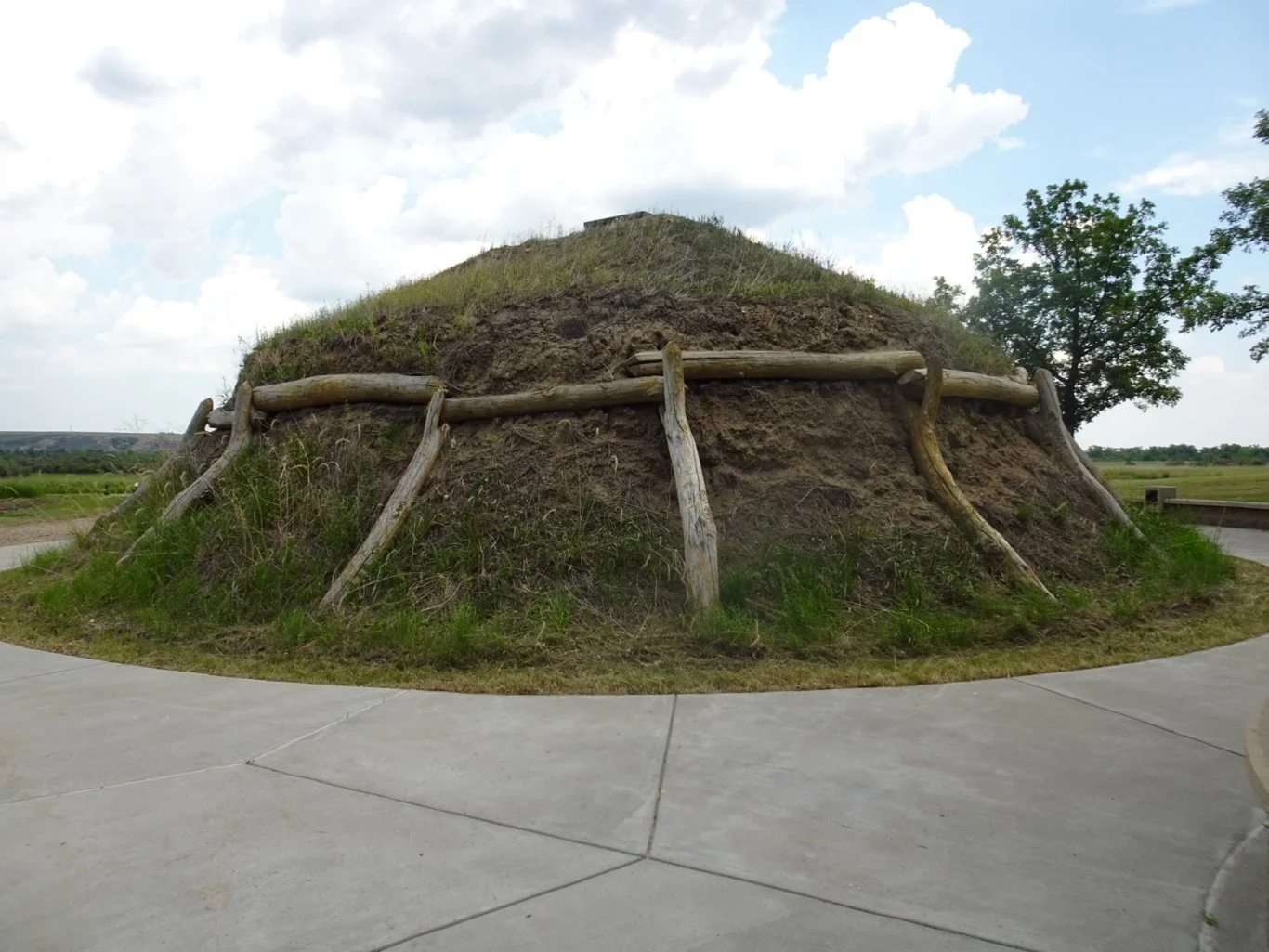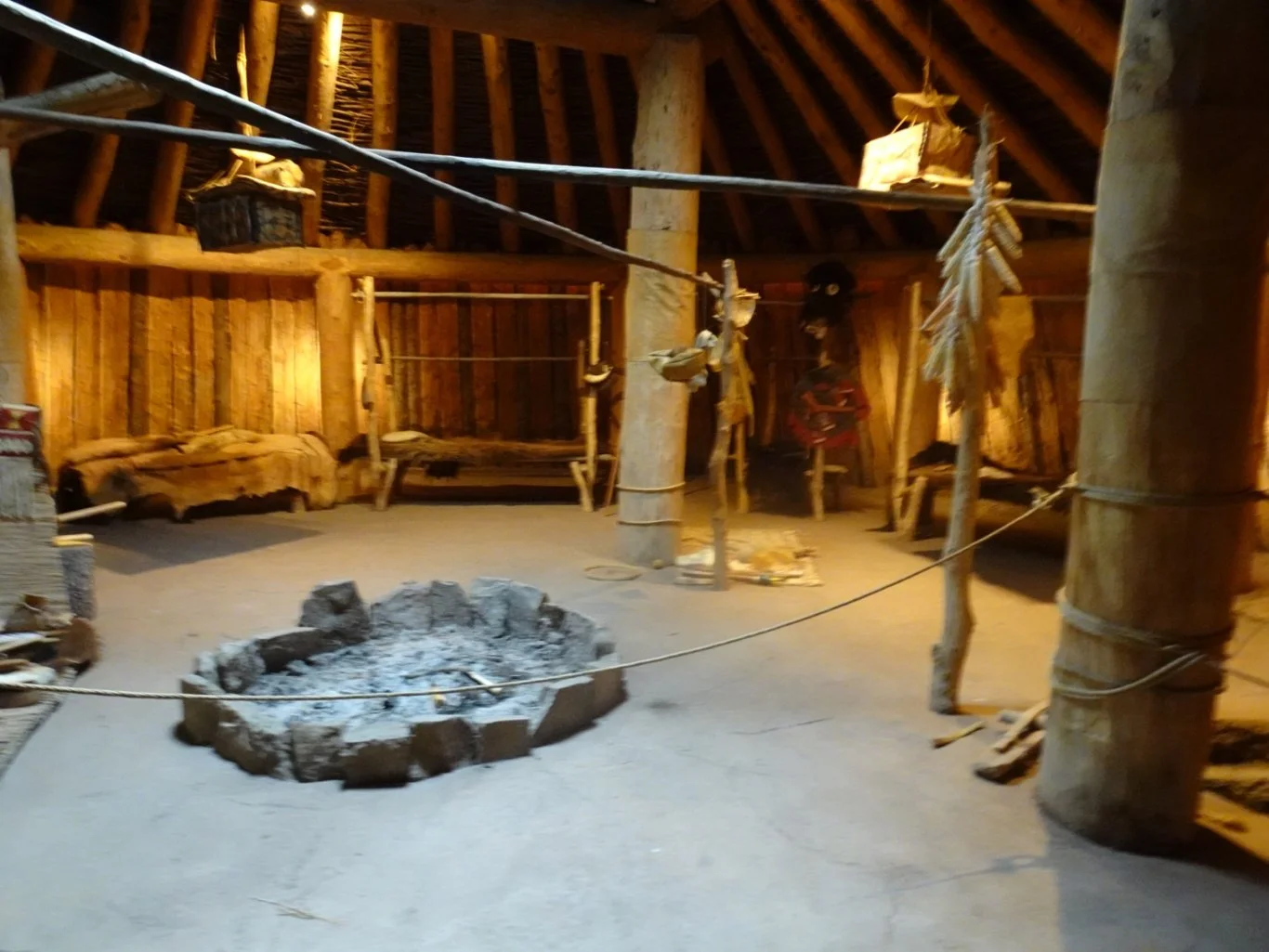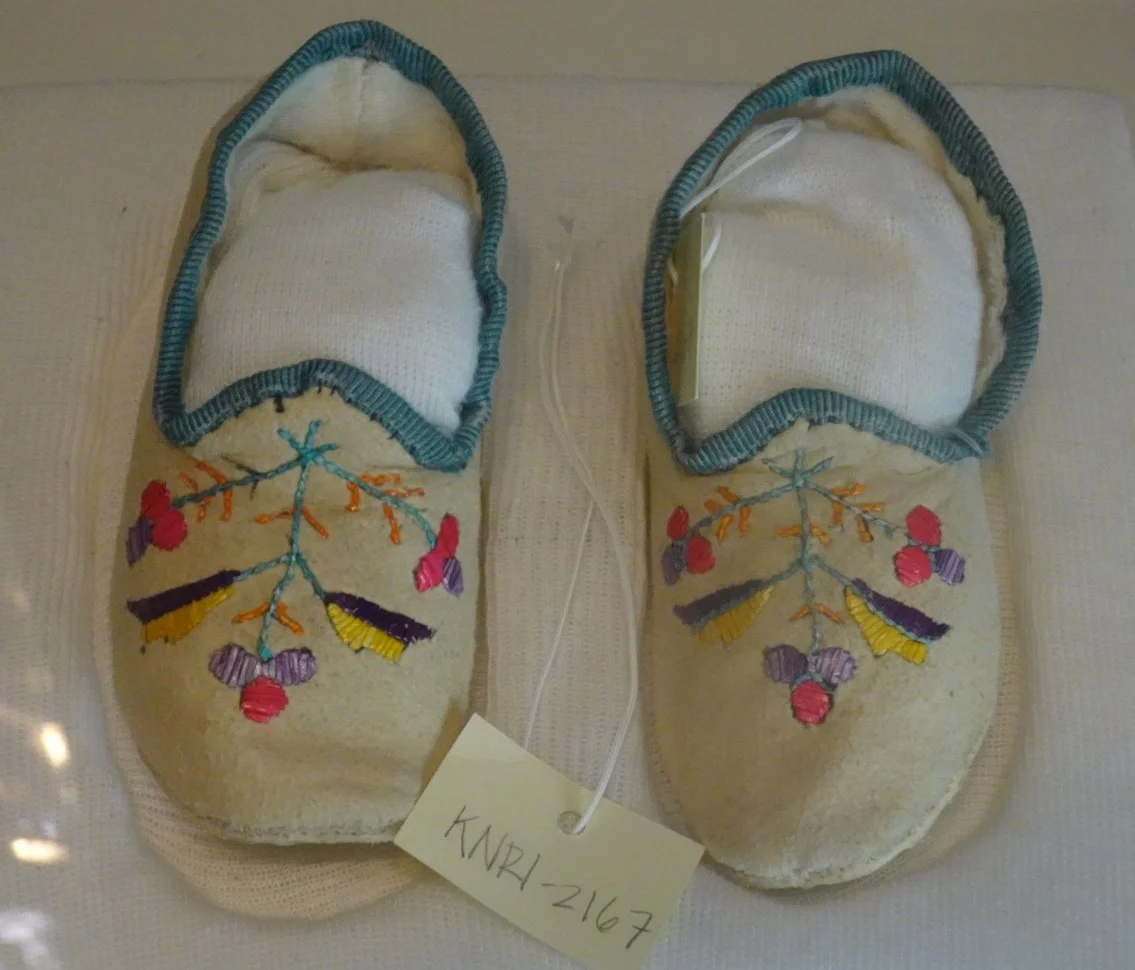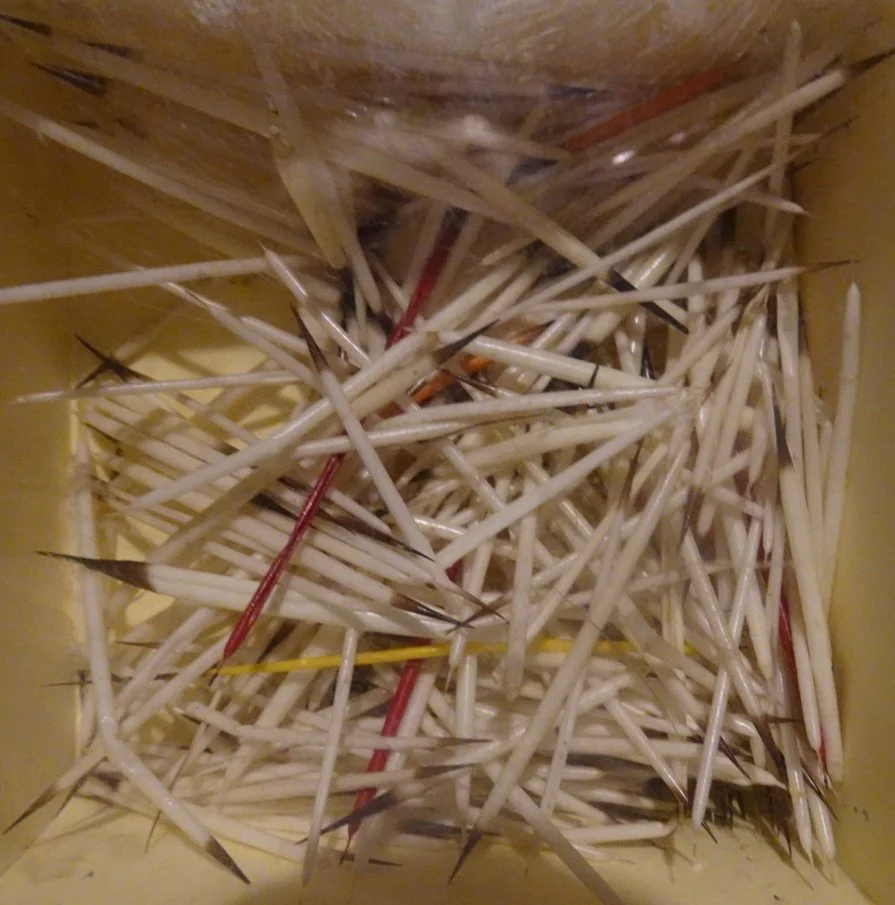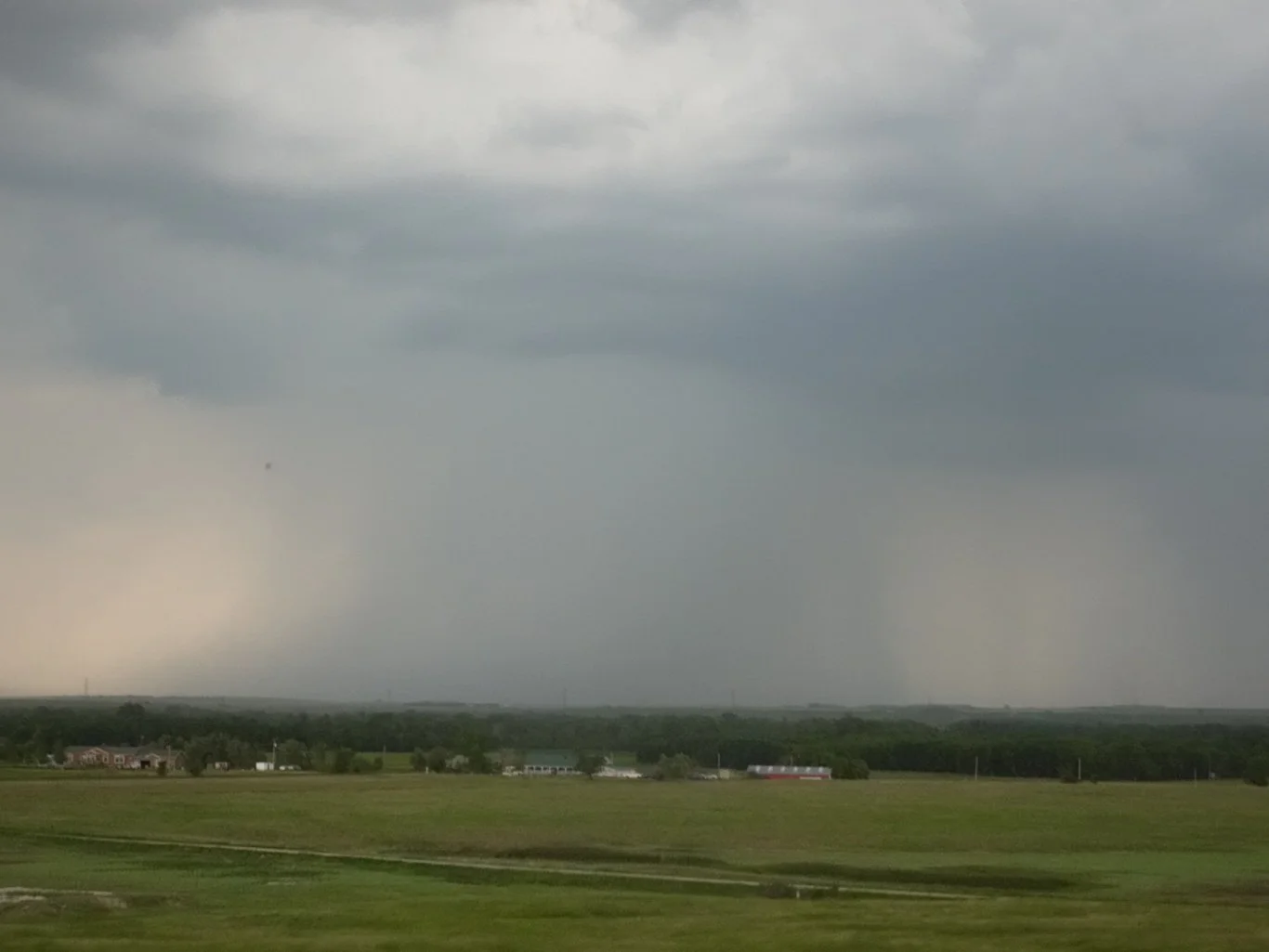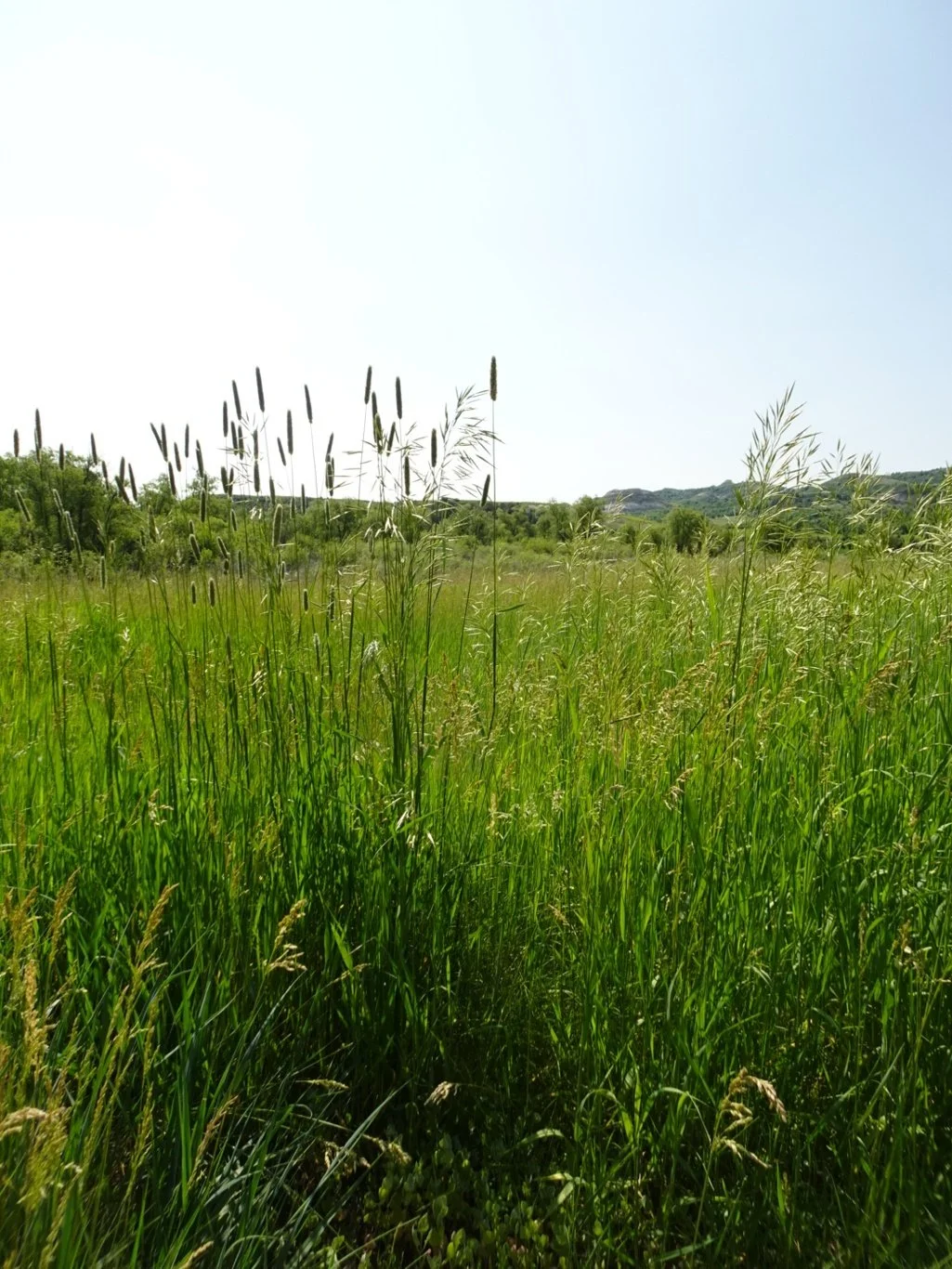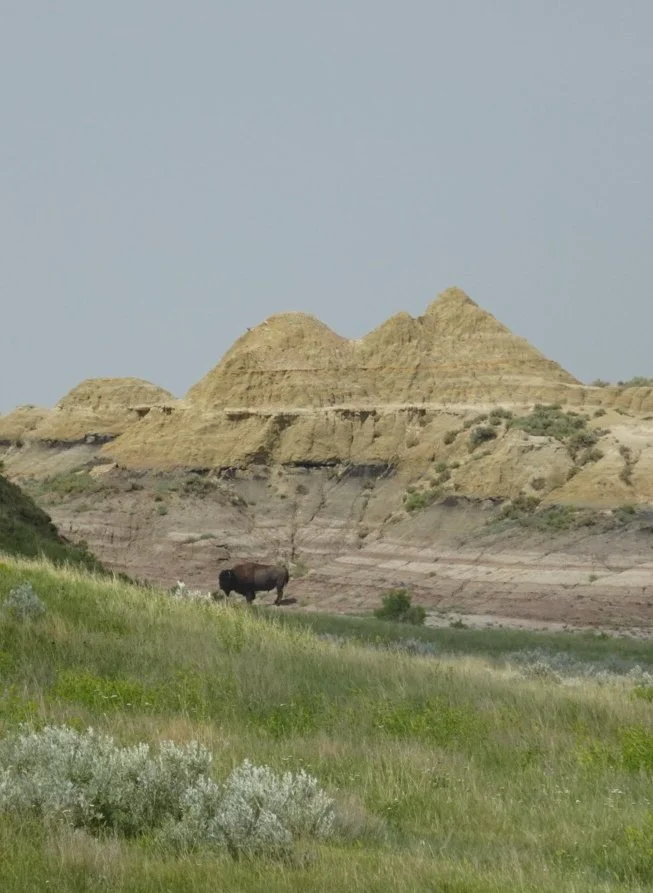Let's Lewis and Clark it
That’s one of our favourite road trip expressions for one of those days when we have just a broad outline in mind and fill in the gaps as we go along. It’s often the case that such a day turns out especially well and I think today was exactly one of those days.
Our first stop of the morning was the North Dakota State Capitol here in Bismarck. Unlike any other such building we’ve visited, this one was especially plain from the outside and could easily have been mistaken for a straightforward office block.
Once inside, things were a little more grand however. We’d aimed to get here for the 10am tour, but a notice on the visitor desk was clear - todays tours would be self guided. That was fine with us and we made a start by reviewing the Rough Rider Hall of Fame series of portraits of worthy North Dakotans, several of whom we recognised: Peggy Lee, Bobby Vee, Louise Ehrlich and Warren Christopher amongst them.
One name would have remained unknown to us had we not read the newspaper here yesterday. Doug Burgum, the current State Governor’s portrait hangs here with reference to his software company, but yesterday we read of his intention to join the race for President.
His office door was open as we passed by but the man himself was not at his desk. So, we admired the flags and identified each one of the tribal designs thanks to the leaflet alongside too.
Both houses were closed today for maintenance, and this central hall was being prepared for a lunchtime reception, so we left the workers to their tasks and will enjoy the online tour later.
We did, however make it to the 18th floor for a grand view of the city and beyond.
As we spotted the huge Missouri River in the distance, the Grandma standing next to us pointed out the Governor’s mansion to her grandchildren. The black roof of the recently completed home is easily seen amongst the trees in the front left corner and driving past later we got a different view of what appears to be a modern interpretation of a Frank Lloyd Wright style home.
It was very different from the Former Governor’s Mansion we visited next.
This historic home had been restored to its former glory, replacing “modernisation” carried out in the 1950s with some more original features. The young woman curator pointed out some of them to us,
In particular, various wallpapers had been conserved in frames revealing the different choices of decor through the years. In most rooms, the original wallpaper had been recreated as a custom print by an artist and the result was very successful.
Our favourite had to be the original radiators, painted gold, exactly as they would have been.
We took a look around the carriage house, where a display of Bismarck in the early 1900s showed the challenge of managing an increasing number of motor vehicles in the city.
I’d say that the roads felt pretty empty compared with those we are used to!
Our next stop was the Lewis and Clark Interpretive Centre, an hour’s drive up the US 83.
We loved the huge metal sculpture that greeted us, of Meriwether Lewis, William Clark and Mandan Tribal Chief Sheheke.
Did I say ‘huge’?
Inside, their story was well told in a very accessible style. The pair had spent the winter of 1804/11805 in Fort Mandan, just up the road from here, when they were heading west on their expedition up the Missouri and this particular exhibit focused on William Clark’s diligent journal keeping.
Needless to say, I appreciated that description and as I turned the corner into an area telling a different story, I soon realised the link. Here was an exhibit with details of Prince Maximilian of Wied-Neuwied’s expedition to the Missouri with artist Karl Bodmer , both inspired by the diligent record keeping of William Clark.
An example of their journal was shown, together with some of Bodmer’s completed watercolours which are highly regarded as some of the most accurate representations of this part of the world at that time.
So although it was good to learn more about the Lewis and Clark expedition, I appreciated the “side show” of the museum just as much. I really liked this small corner showing how trading goods enhanced the life of the tribespeople here who found it possible to trade their wares for beads, woollen fabric and metal cookware.
As we left, I admired the immense wooden joints used in the construction of this building, created from 8” x 8” wooden posts. Wow.
Next stop, a replica of Fort Mandan, where Lewis and Clark and their expeditionary party spent that long winter alongside the frozen Missouri river. Here, knowledgeable and friendly staff enhanced our visit, adding detail to the bits we already knew. Sacagewea featured here and we chatted a while about the woman and the myth. Separating truth from fiction isn’t easy where she is concerned! She has featured in several of our previous road trips, here and here for example and her story continues to intrigue.
With a glimpse of the living conditions at Fort Mandan and a couple of interesting conversations with the staff about current life in winter here, we decided we had time for one last visit.
We set off over the Missouri towards the Knife River Indian Villages, a National Historic site.
The Visitor Centre was built to a distinctive design.
By the time we arrived, the weather was coming in and the sky became very threatening.
So we lost no time in heading straight for the earth lodge that was there, an example of the summer home of the Mandan and Hidatsa tribespeople (of whom Sacagewea is counted). Our first thought was how similar this seemed to the home of the Sami people in Norway, where we’d been last year.
When we made our way through the bison fur door into the lodge, that memory was reinforced 100X - the smoky aroma and the layout of the interior was virtually identical. We were just missing our friends sitting around the edge of the circle!
Keeping an eye on that sky, we hurried back inside, where I took a closer look at some of the remarkable things on display, including a pair of tiny shoes with some pretty embroidery on them.
Alongside were a few details of the materials used…
porcupine quills! The ranger explained how they would be dyed using plants or crushed beetles, cut in half and pressed flat before “sewing”.
The end result is great - though I wonder how durable the quills would be, for surely they’re quite brittle? Shame I didn’t think about that when I had an expert on hand!
The drive back to Bismarck was mostly in the dry, though the storm was never far away. The first drops of rain began to fall just as we ran into the hotel.
Perfect timing!








